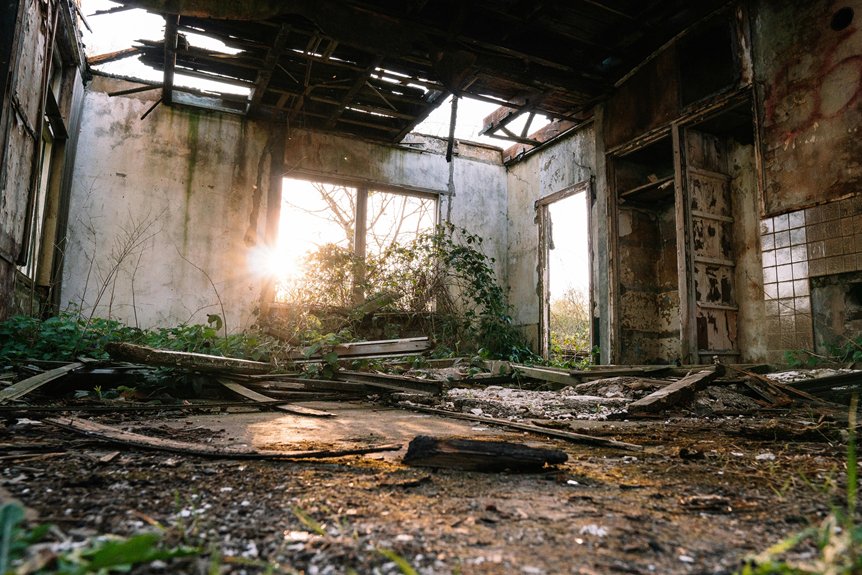Protecting your commercial roof from hail damage in North Texas requires a strategic, multi-layered approach. Regular inspections help identify early signs of wear, while impact-resistant materials like UL 2218 Class 4 shingles can considerably improve resilience. Combining these with protective coatings and careful landscape management reduces vulnerabilities. Developing an extensive hail mitigation plan and consulting with roofing professionals ensures your roof is prepared for severe weather, but understanding the most effective strategies involves considering multiple factors that influence storm-related risks.
Conduct Regular Roof Inspections and Maintenance
Regular roof inspections and maintenance are essential for identifying vulnerabilities that hail can exploit. You should systematically examine roofing membranes for punctures, cracks, or tears, especially around flashing, seams, and joints. To ensure thorough protection, consider professional roofing assessments periodically, as they can detect issues that might be overlooked during routine checks. Check for granular loss on asphalt shingles and signs of surface erosion. Inspect drainage systems and ensure gutters and downspouts are free of debris to prevent water pooling. Pay attention to structural components like support beams and insulation, which can weaken under repeated impacts. Document all findings with detailed reports and photographs. Prompt repairs to minor damage prevent progression to more severe issues, maintaining the roof’s integrity against future hail events.
Install Impact-Resistant Roofing Materials
Upgrading to impact-resistant roofing materials offers a proactive defense against hail damage by enhancing the durability of your roof’s surface. Materials like UL 2218 Class 4 asphalt shingles, metal panels, or reinforced thermoplastic polyolefin (TPO) membranes are engineered with impact modifiers and tough substrates to absorb and deflect hail impact.
These materials undergo rigorous ASTM and UL impact testing, ensuring they withstand high-velocity hailstones common in North Texas.
Proper installation involves secure fastening, seamless flashing, and adherence to manufacturer specifications to prevent vulnerabilities.
Selecting the right impact-resistant materials markedly reduces the risk of denting, punctures, and leaks, extending your roof’s service life and minimizing costly repairs.
Apply Protective Roof Coatings for Added Shielding
Applying protective roof coatings provides an additional layer of defense against hail damage by enhancing the surface’s impact resistance and waterproofing properties. Elastomeric coatings, such as silicone or acrylic-based products, form seamless, durable membranes that absorb and deflect hail impact, reducing surface fractures.
These coatings also seal existing microcracks, preventing water infiltration and further deterioration. Proper surface preparation guarantees maximum adhesion, involving cleaning, repairing minor damages, and applying primer if necessary.
Coatings should be applied in weather conditions that prevent rapid curing or peeling. Regular inspection and reapplication maintain their protective qualities, extending roof lifespan and minimizing hail-related repair costs in North Texas.
Trim Surrounding Trees to Prevent Falling Debris
Maintaining a clear perimeter around your commercial roof by trimming surrounding trees is essential for minimizing damage caused by falling debris during storms. Proper pruning reduces the risk of branches breaking under hail impact or high winds, preventing them from becoming projectiles that can puncture roofing membranes or crack membrane seams.
Focus on removing weak, dead, or overextended limbs, especially those within 10 feet of the roof edge. Use industry-standard pruning techniques to eliminate potential hazards without compromising tree health.
Regular inspections ensure timely removal of hazardous branches, safeguarding your roofing system from impact damage and reducing the likelihood of debris accumulation that can trap moisture and promote deterioration.
Implement a Hail Damage Prevention Plan
To effectively reduce hail-related damage to your commercial roof, you need to develop and implement a thorough hail damage prevention plan that integrates proactive inspection, material selection, and storm preparedness strategies.
This plan should include regular structural assessments to identify vulnerabilities, such as compromised flashing or membrane deterioration.
Select impact-resistant roofing materials like thermoplastic polyolefin (TPO) or polyvinyl chloride (PVC) with high hail impact ratings.
Incorporate storm readiness protocols, such as securing rooftop equipment and installing protective coatings or hail guards.
Document inspections and maintenance actions meticulously, ensuring swift responses to any damage or weaknesses.
This exhaustive approach minimizes hail impact and prolongs your roof’s service life.
Work With Local Roofing Experts for Professional Assessments
Partnering with experienced local roofing professionals guarantees your hail damage prevention efforts are grounded in expertise and industry standards. These specialists conduct thorough inspections using advanced diagnostic tools like infrared thermography, impact-resistant testing, and detailed roof assessments to identify vulnerabilities.
They evaluate material integrity, seam integrity, and drainage systems to determine potential failure points. Their evaluations ensure compliance with local building codes and hail-resistant standards, providing a precise understanding of your roof’s current condition.
Conclusion
By implementing these targeted strategies—regular inspections, impact-resistant materials, protective coatings, debris mitigation, and a comprehensive hail damage prevention plan—you’ll considerably enhance your commercial roof’s resilience against North Texas hailstorms. Collaborate with local roofing professionals to conduct detailed assessments and guarantee proper installation of impact-rated materials. Proactive maintenance and strategic planning are essential to extending your roof’s lifespan, minimizing repair costs, and maintaining structural integrity amidst severe weather events. For more information on how to schedule your free roof inspection, call us at (405) 543-2920 or visit us online at Top View Roofing.

